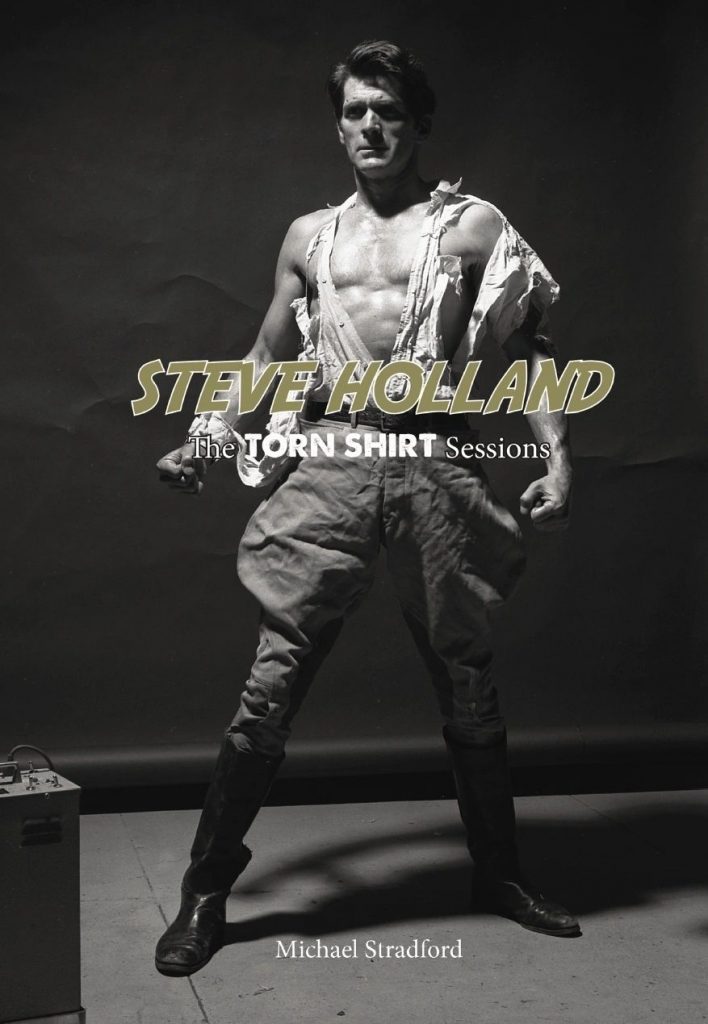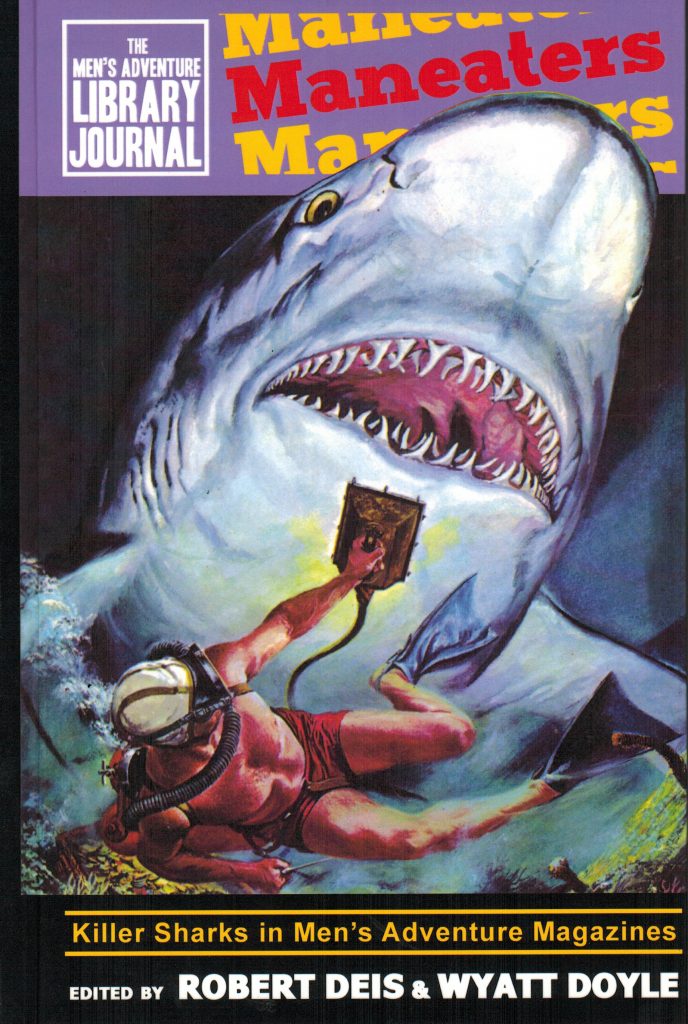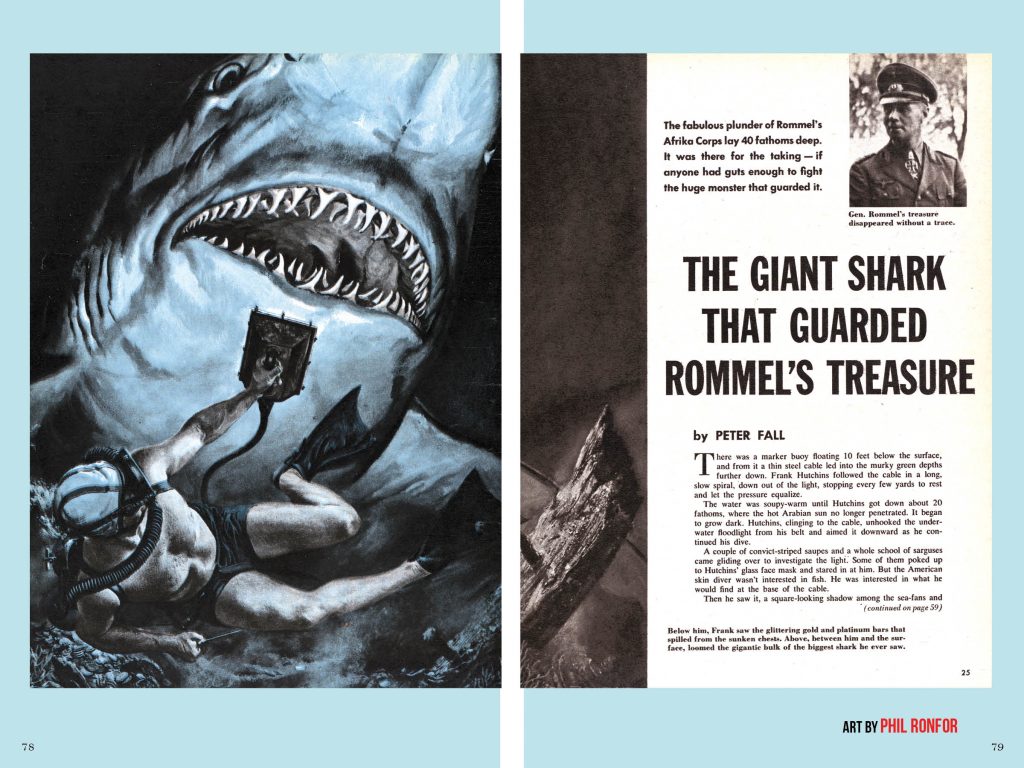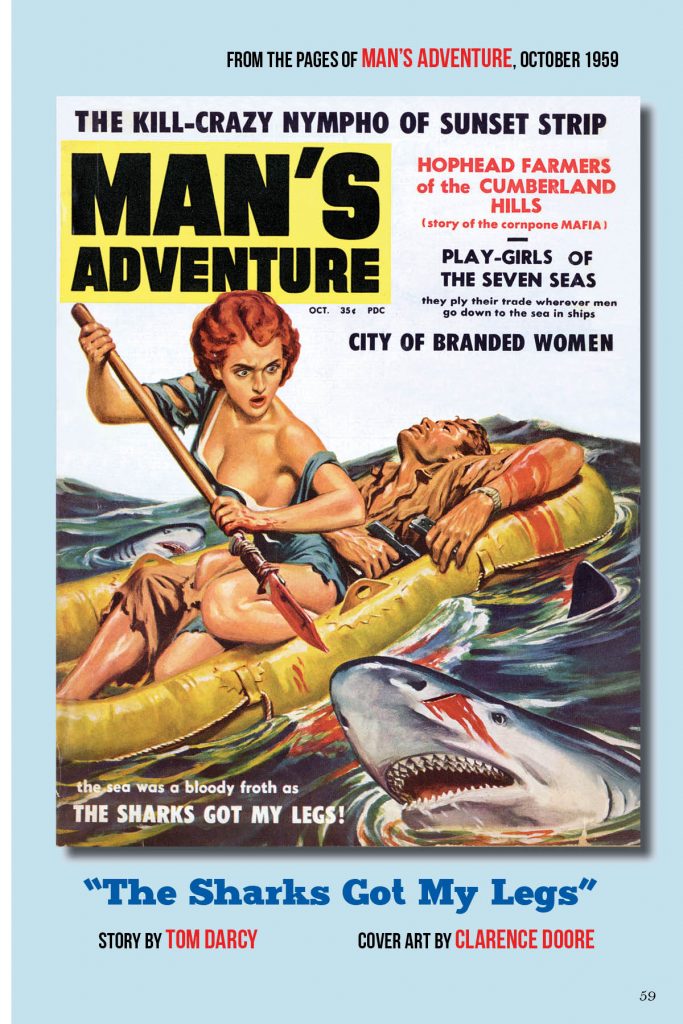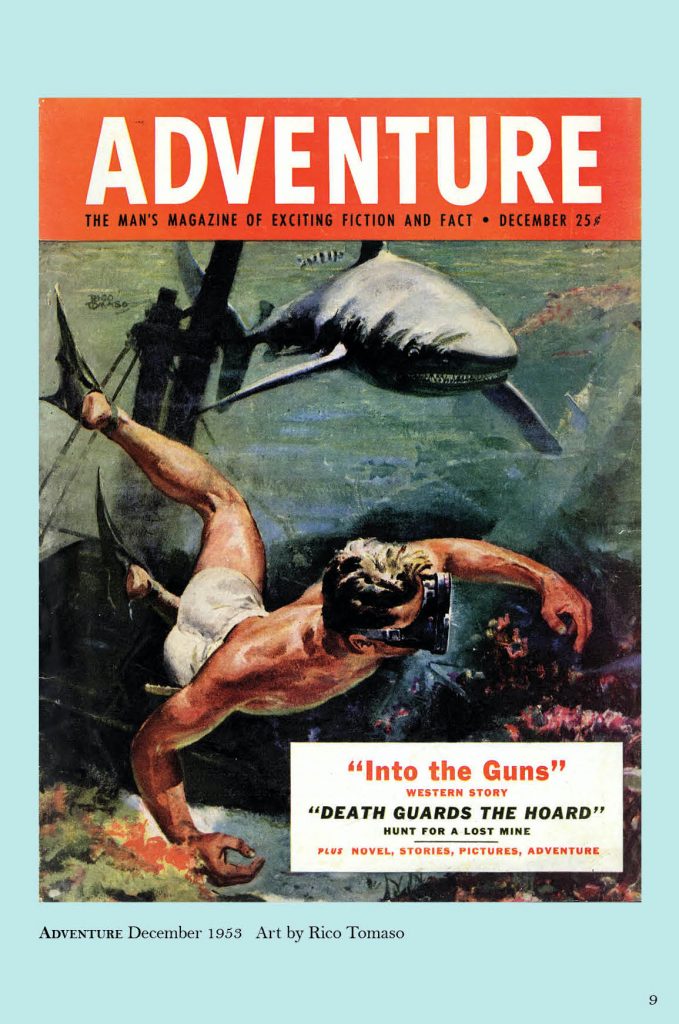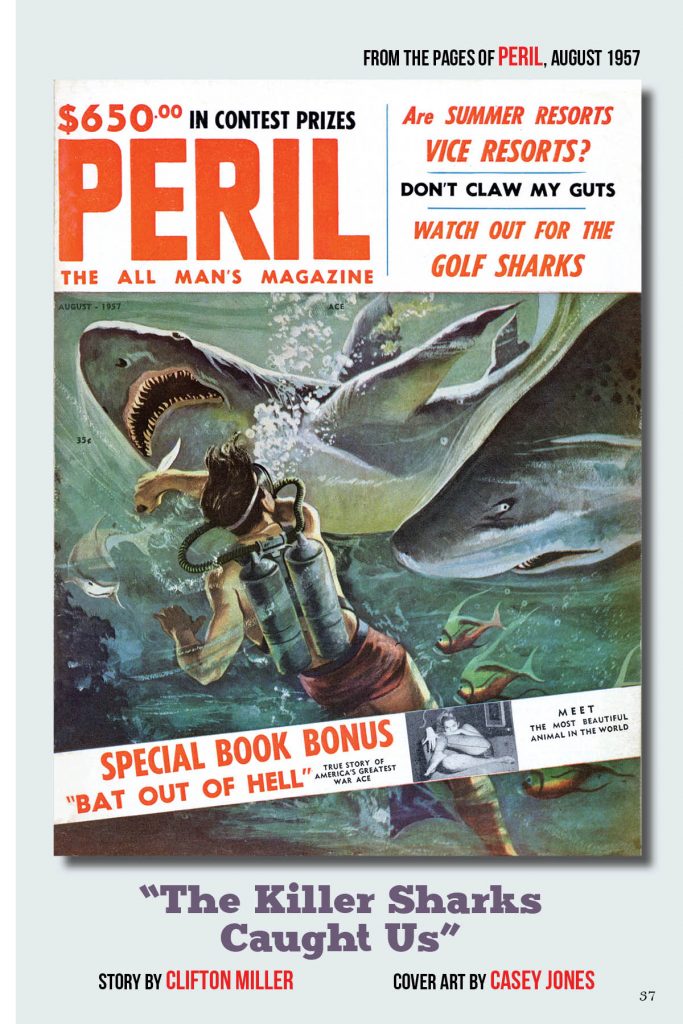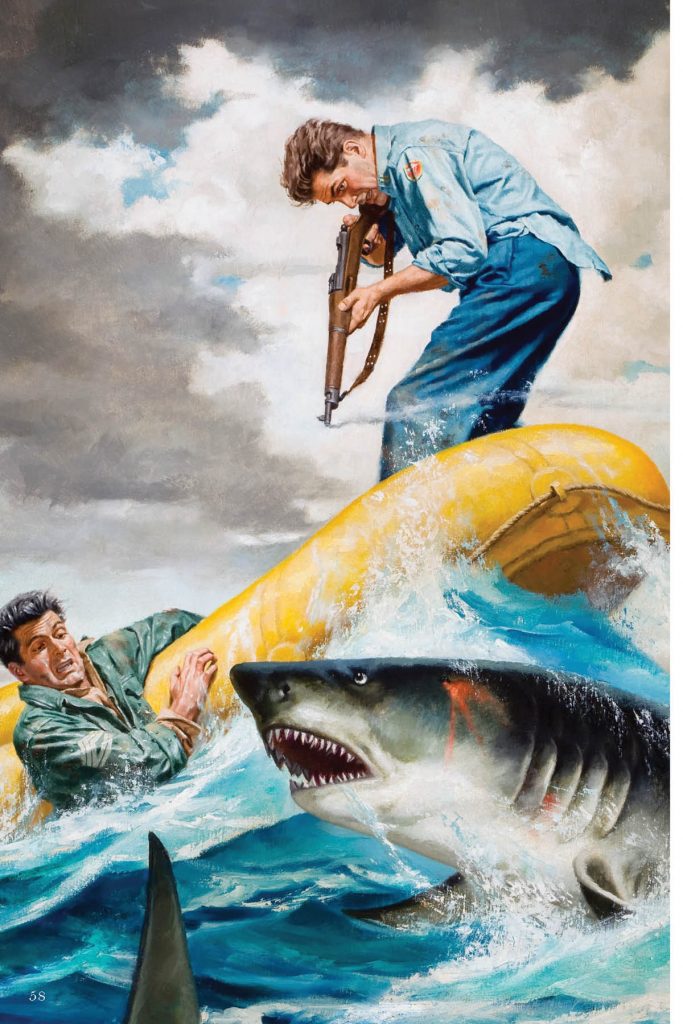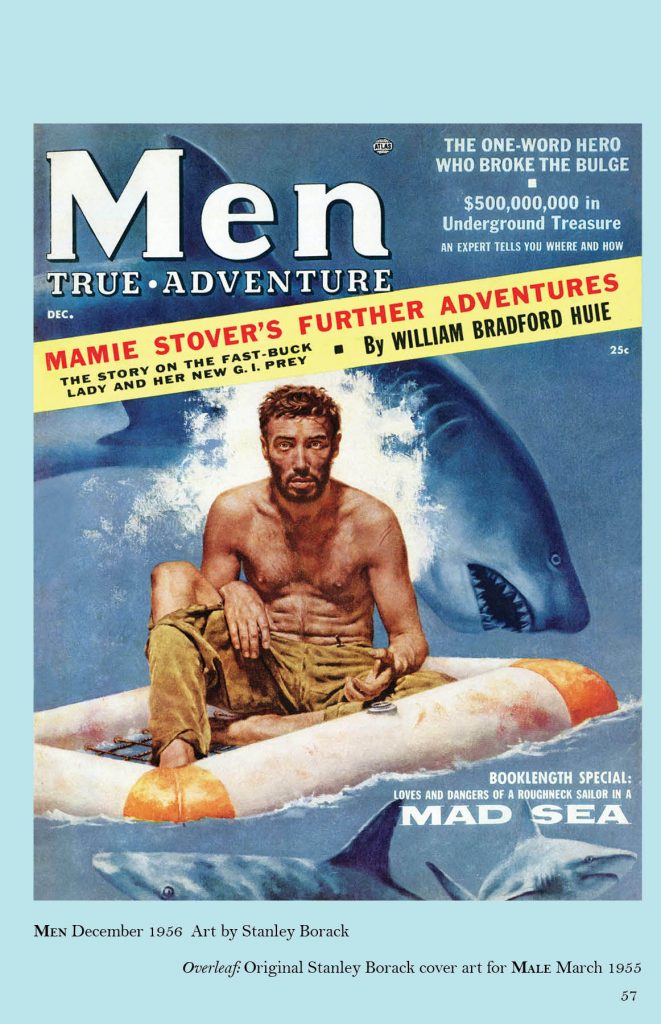Today’s Pulp Friday post looks at two pulp-related projects that I think should be on your radar.
The first is Michael Stradford’s Steve Holland: The Torn Shirt Sessions. Many of you have probably have not heard of Steve Holland but if you collect pulp paperbacks, I can almost guarantee that you will have seen his face on covers that you have from the 1950s to the 1980s. Holland was one of the foremost paperback cover models over this period and certainly the most used male model I am aware of.
While I was familiar with Holland’s chiselled features from the cover art of numerous books in my possession long before I realised who he was, since learning his name it seems like I, literally, cannot go into second-hand bookshop or browse pulp art the internet without stumbling across him. He not only modelled for paperbacks, but for the covers of men’s adventure magazines and comic books, in every conceivable genre. In the process, he worked with some of the foremost pulp illustrators of the 20th century, including Mort Kunstler, Roger Kastel, and Ron Lesser, just to name a few.
One of the characters Holland is most closely associated with is Doc Savage, The Man of Bronze. A fictional character who first appeared in American pulp magazines in the 1930s, Doc Savage transitioned to the paperback format in the mid-1960s. The Torn Shirt Sessions contains a series of photographs of Holland in poses for artist James Bama, who illustrated 62 covers for the paperback series from 1960 to the 1970s. The original black and white photos are sourced from Bama’s personal collection, with additional material from sessions that Holland did with subsequent Doc Savage illustrators, Bob Larkin and Joe DeVito. There are some short commentaries and, where rights issues allowed, the photographs are contrasted with cover art that eventuated from the shoots.
While the cover art has always been pulp’s most recognisable feature, it has also been the aspect of pulp fiction that is the least researched and written about. That this situation is being corrected by fan scholars such as Stradford and the books edited by Bob Deis and Wyatt Doyle for the Men’s Adventure Library Journal series, is to be applauded.
But while The Torn Shirt Sessions on its own can best be described as an interesting and cool pop culture memento, it is also a taster of sorts for a far more important book Stradford is working on, Steve Holland: The World’s Greatest Art Model. I understand from updates on Stradford’s website that this book, which is shaping up to be a major piece of fan scholarship on pulp illustration, is nearing completion and will be available soon. I am sure I am not alone in eagerly awaiting it.
In the meantime, you can still get discounted copies of The Torn Shirt Sessions by visiting this link. This discount will be in place until November 6.
As regular readers of this site will know, I am a big fan of the aforementioned Men’s Adventure Library Journal series, published by New Texture. Their book on female cover model Eva Lynd, which I reviewed on this site here, is one of the texts that I would include in the collection of recent works that have focused more attention on mechanics behind the creation pulp cover art. Anyway, Deis and Doyle have released a new book in the series, Maneaters: Killer Sharks in Men’s Adventure Magazines.
I have written previously on Pulp Curry about Australian pulp fiction’s fascination with sharks and it was no different in the case of pulp published in the US, including men’s adventure magazines (which have also been referred to as sweat or bachelor magazines), which flourished on American newsstands from the 1950s to the 1970s. These magazines were obsessed with rugged men matching their wits and physical strength against a variety of completely overhyped and exaggerated dangers. And at the top of the men’s adventure food chain of threats was the shark.
Maneaters follows the usual format of the series, fiction and non-fiction articles from men’s adventure magazines – in this case on the theme of sharks and shark attacks – alongside the art that appeared with the text in question, a selection of which you can see below.
But this book also includes and something new. Each story is followed by a short commentary from a marine biologist, addressing the factual basis of the story concerned – which, given the focus of these magazines on the outré and sensational, was nearly always minimal – and addressing misconceptions about these misunderstood predators of the deep. Maneaters: Killer Sharks in Men’s Adventure Magazines is worth it from the stunning illustrations alone, but this additional flourish makes it even more of a must have. You can find the book on Amazon and other online shops.

